For those that don’t know what maximum flash sync speed is, put a flash on your camera, in Speed or Manual mode set it to 1/400s and take a shot. You’ll see that half the frame (usually the bottom) is darker than the top.
This is where the shutter is passing the sensor too fast for the flash and it closes during the flash fire.
Up until recently, the only cameras that were capable of high-speed sync were Medium Format digital cameras (e.g. Hasselblad) that cost £10+K. Medium Format cameras have a different shutter system (usually in the lens) and so the sensor is exposed to the image in a different way.
In the older film days, 35mm cameras had a maximum sync speed of about 1/60s …. which was a bit naff.
It’s only until fairly recently the maximum you could achieve with increased to 1/250s with Nikon and 1/200s with Canon.
Although this was much improved over the old systems, it was still limiting to what you could do in broad daylight.
Then Nikon brought out what they call “Auto FP High-Speed Sync” and Canon call “High Speed Sync”.
This allows the camera to fire a speedlight multiple times as the shutter curtain passes the sensor which ‘paints’ the images onto the sensor at much faster shutter speeds.
It basically makes the flash last a bit longer so that it gets all the image lit right to the bottom
The cost for this is a bit of power.
Where your flash may be outputting F22 @1m at full power, if you increase the shutter to, say, 1/2000, you’re Aperture will need to drop to a lower value (F8?) to maintain the same exposure.
This in itself is amazing and the fact that modern strobes like the SB800 and SB900 (and Canon EX580?) can cope with this is phenomenal and opens up a lot more possibilities with your photography. It kills the batteries, but that’s why we keep spares handy ![]()
However, there are 2 drawbacks to this.
1) The camera has to be able to communicate to the flash to do this. Either in the hotshoe, using a remote hotshoe cable, or with some cameras, with the built in flash can talk to the speedlights
2) As mentioned above, there’s a power loss when increasing the sync speed beyond the native 1/250 sync as the flash has to increase it’s duration
So to increase the power you need more powerful lights than your speedlight, but you can’t make Studio Strobes sync faster than 1/250s ….. or can you ?
The answer is Yes.
Better than that, there’s 3 ways of doing it ![]()
The expensive way to do it is to use a PocketWizard MiniTT1 and FlexTT5 triggers to do this. But at approximately £225 each, its not cheap.
It will let you sync up to approx 1/500s (so I’m told) which is better, but not quite in the 1/5000s area.
In a light controlled area (e.g. a studio) use the flash to set the shutterspeed, not the camera.
The flash duration of a studio strobe varies on the make/model, but in all cases the duration is shorter(faster) at the lower power output than at full power. e.g the flash duration of an Elinchrom Ranger head can reach up to 1/6000s
This is the duration of the light emitted from the flash and in a light-tight room will be the only light source, so anything photographed will be at the flash’s duration speed rather then the one set in-camera.
To set up a high-speed shot, black out a room and set your camera to the correct ISO and f/stop for the power set on the srobes.
Set a long camera exposure (e.g. 2-20 seconds) and take a test shot with no flash.
If there’s any hint of an image then there’s ambient light from somewhere. Find it – block it.
To do the live shot you must manually trigger the strobes during the exposure …. and there you have it, high-speed sync.
The on-location way to do it is to use your existing speedlight (SB800 or SB900) to blip the light and set your studio strobe to be optically slaved and it will fire with the speedlight, but giving much more power than the speedlight could dream of.
The downside of this is that the flash needs to reach the Studio head which should be fine up to a point, but if you have remote lights beyond range or around corners, then the PocketWizards will be required
Below is a pictorial example of how to achieve High Speed Sync with just 1 speedlight and studio flashes.
NOTE: The studio lights are set to their lowest power setting throughout and my Nikon D700 is set to AutoFP on
1st shot – ambient light

Ambient. 1/13 @ f/7.1 @ ISO6400
I hook up an Elinchrom Skyport trigger as the BXRi has a built in receiver.

Ambient. 1/40 @ f/3.2 @ ISO6400
Pow!!! These things kick out some light…

Wireless Skyport. 1/200 @ f/8 @ ISO400
Switch off the Skyport and set the camera to a ‘flash’ setting and take a shot to show that no ambient is showing

Ambient. 1/250 @ f/11 @ ISO400
Switch the Skyport back on and … Half decent exposure. Notice the bottom edge of the frame is a bit dark. Looks like the Skyport/Elinchrom combination is not quite 1/250s which is a surprise. 1/200s will be fine though

Wireless Skyport. 1/250 @ f/11 @ ISO200
Increase the shutter speed to 1/400 and there’s the typical sign that we’ve exceeded the sync speed

Wireless Skyport. 1/400 @ f/11 @ ISO200
So lets try a PC Sync cable to see if that’s better

Ambient. 1/40 @ f/2.8 @ ISO6400
Looks fine at 1/200s. Let’s up it to 1/250s to see if we get the dark area at the base of the frame again

Sync Cable. 1/200 @ f/11 @ ISO200
….. Nope – it looks fine. The wire connection is fine at 1/250s. The wireless must be a bit sluggish
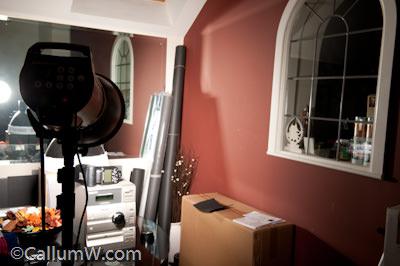
Sync Cable. 1/250 @ f/11 @ ISO200
Bump it to 1/400s and there’s the clipping of the frame again. Interesting that it’s much lower than using the Wireless trigger due to the immediacy of the hard wire connection

Sync Cable. 1/400 @ f/11 @ ISO200
Time to try the speedlight. Ignore the settings in this picture
It was actually set to [TTL][BL][FP] for the next shots

Ambient. 1/160 @ f/2.8 @ ISO6400
Ambient shot at much lower settings. The speedlights pack a much lower punch so need to adjust down accordingly

Ambient. 1/200 @ f/2.8 @ ISO400
Flash switched on and ….. not too bad
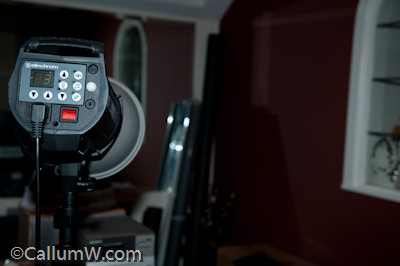
SB900 TTL FP. 1/200 @ f/4 @ ISO200
1/250s is showing clean edge to edge illumination
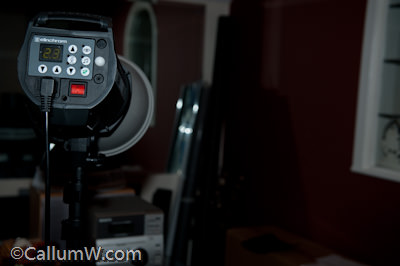
SB900 TTL FP. 1/250 @ f/4 @ ISO200
Ramped it up to 1/800 and it’s still lit fine, but notice the slight warmer colour shift

SB900 TTL FP. 1/800 @ f/4 @ ISO200
Ramp it up to 1/4000s and it’s still popping away quite happily
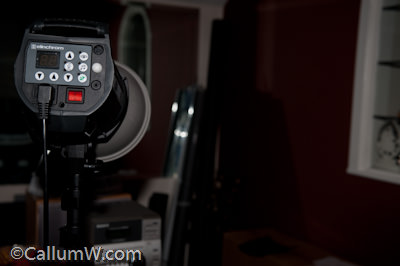
SB900 TTL FP. 1/4000 @ f/4 @ ISO200
I now set the SB900 to manual and it’s lowest setting (1/128) as per the picture 6 up from here. It actually shows [M] [FP] to indicate that it’s in high-speed-sync mode.
The Flash hardly does anything to the image, but will easily trigger the BXRi optical slave….
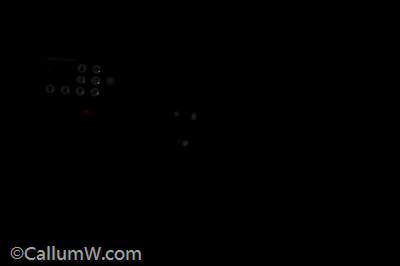
SB900 M FP 1/128 power. D700 1/4000 @ f/4 @ ISO200
Set the optical slave on and ….. hey presto. Clean image at 1/250s

SB900 M FP 1/128 power. D700 1/250 @ f/11 @ ISO200
Bump it up to 1/800 and, although it’s darker in the top of the frame, the bottom section is lit.

SB900 M FP 1/128 power. D700 1/800 @ f/11 @ ISO200
Increase to 1/2000s and it’s still lighting it. Bare n mind this is the BXRi at minimum powerand the camera settings are 2 stops darker than when using the AutoFP with the SB900

SB900 M FP 1/128 power. D700 1/2000 @ f/11 @ ISO200
Increase the F stop to F4 rather than power up the strobe head

SB900 M FP 1/128 power. D700 1/2000 @ f/4 @ ISO200
Hardly any change when increasing it to 1/4000s

SB900 M FP 1/128 power. D700 1/4000 @ f/4 @ ISO200
And again virtually no change even though the camera is firing at 1/8000s
…. yes 1/8000s sync with a studio light ![]()

SB900 M FP 1/128 power. D700 1/8000 @ f/4 @ ISO400
So there you have it. The easy way to perform maximum sync speeds on your camera and still be able to use studio lighting to light your subject.
Any comments, please add them below 🙂
A couple of days back I posted about the abstract picture I made for Signature, the hairdresser shop in Woking, Surrey.
I’ve been snowed under at the moment and so my dad offered to frame the picture for me, which he does now and again if I’m flat out.
It also gave me a chance to drop off a picture I’d made for him to say thanks for helping me out over the last few months and because, well, he’s my dad and that’s reason enough ![]() )
)
His picture was one he took from the tiller of a scooner sailing at full tilt.
He likes his sailing
He dropped round the picture last night and we chatted for a bit. We talked a bit about the Workshop I’ve recently arranged for Bert Stephani and how it’s about lighting.
Dad used to be a keen film snapper when my brother and I were young (lots of family albums), but I was trying to explain layered lighting and how it’s controlled.
I could see the slightly vacant expression coming back at me, so I decided a practical was in order to explain what I was twittering on about
So I sat him down, set up my folding backdrop, one light stand, flash and umbrella and gave him a 5 minute demonstration.
He quite liked the results and I also got some cool shots of him for prosperity.
So, here’s my dad being a good sport while his youngest got all wide eyed and rattled on at 100mph.
The look you only get from a father to their crazy son:
I sent it to him and he emailed back thanking me, but asked who the wrinkly old man in the picture was.
Comedian😉
Wow – this is a late one.
Just back from a corporate event. Chêne Bleu Wines from La Verrière were launching their label in the UK and they were holding the launch party in Belgravia in London (http://www.bottaccio.co.uk/)
I was working alongside my friend Helen Jones and we both have studio lighting which we both had to bring in order to light this event.
One area was for after the guests drop in their coats and move through to the wine sampling room so they could try the new range of wines launched on the night.
Due to some limitations on space we set up my large octabox on one of my Elinchrom heads planted on a tall stand and this was used for the couples/portrait shots as the guests arrived.
Upstairs we had another 2 Elnchroms set up to light a n area in front of a painted scrim between 2 columns with vases and shrubbery. The theme of the party was Toga and so the Greek look fitted into the rest of the party’s layout nicely. We were using 3 flash heads which left us with our fourth as a backup which was ideal
None of the studio lights were set to ‘slave’ mode to stop them being triggered by the guest’s cameras and so we were triggering all the flashes with my wireless radio triggers (PocketWizards), but even though we were on 2 separate floors we had to make sure they were in independent channels to ensure we weren’t triggering the other set by mistake.
PocketWizards (http://www.pocketwizard.com/) are an amazing piece of kit and definitely worth their weight in gold for their versatility, 100% performance and range of operation


